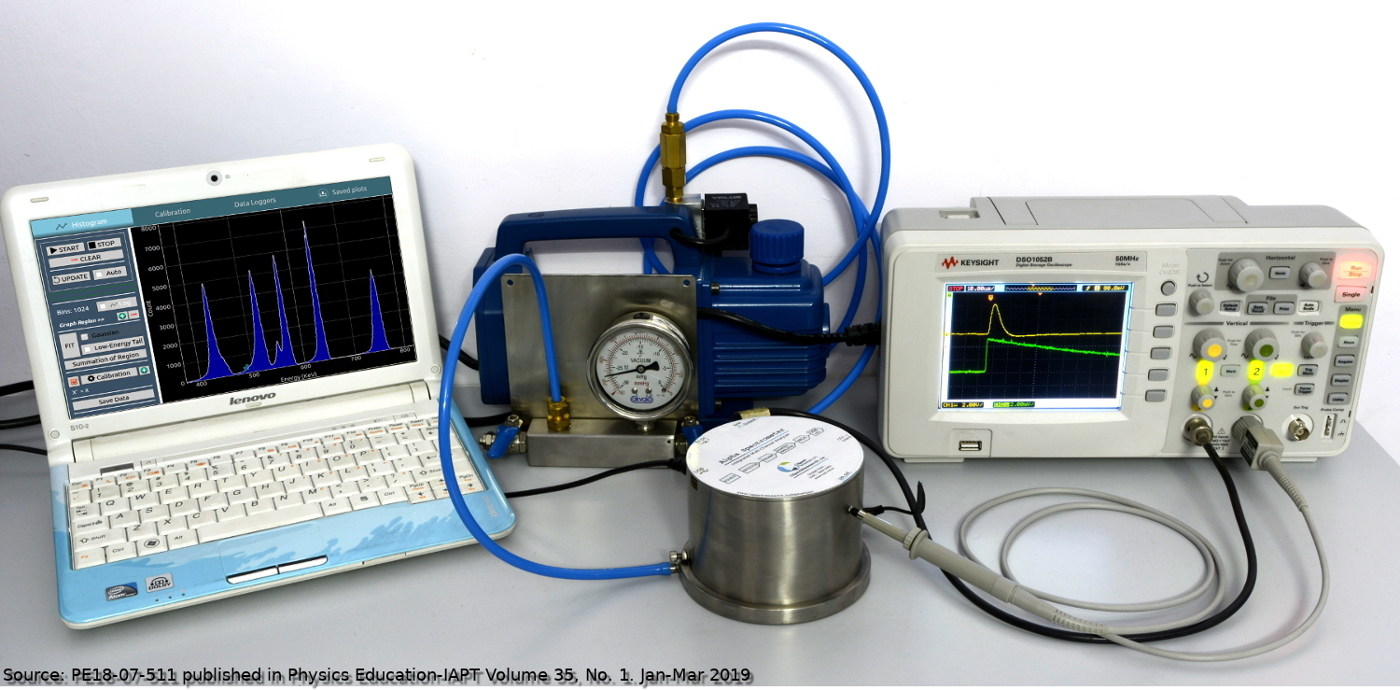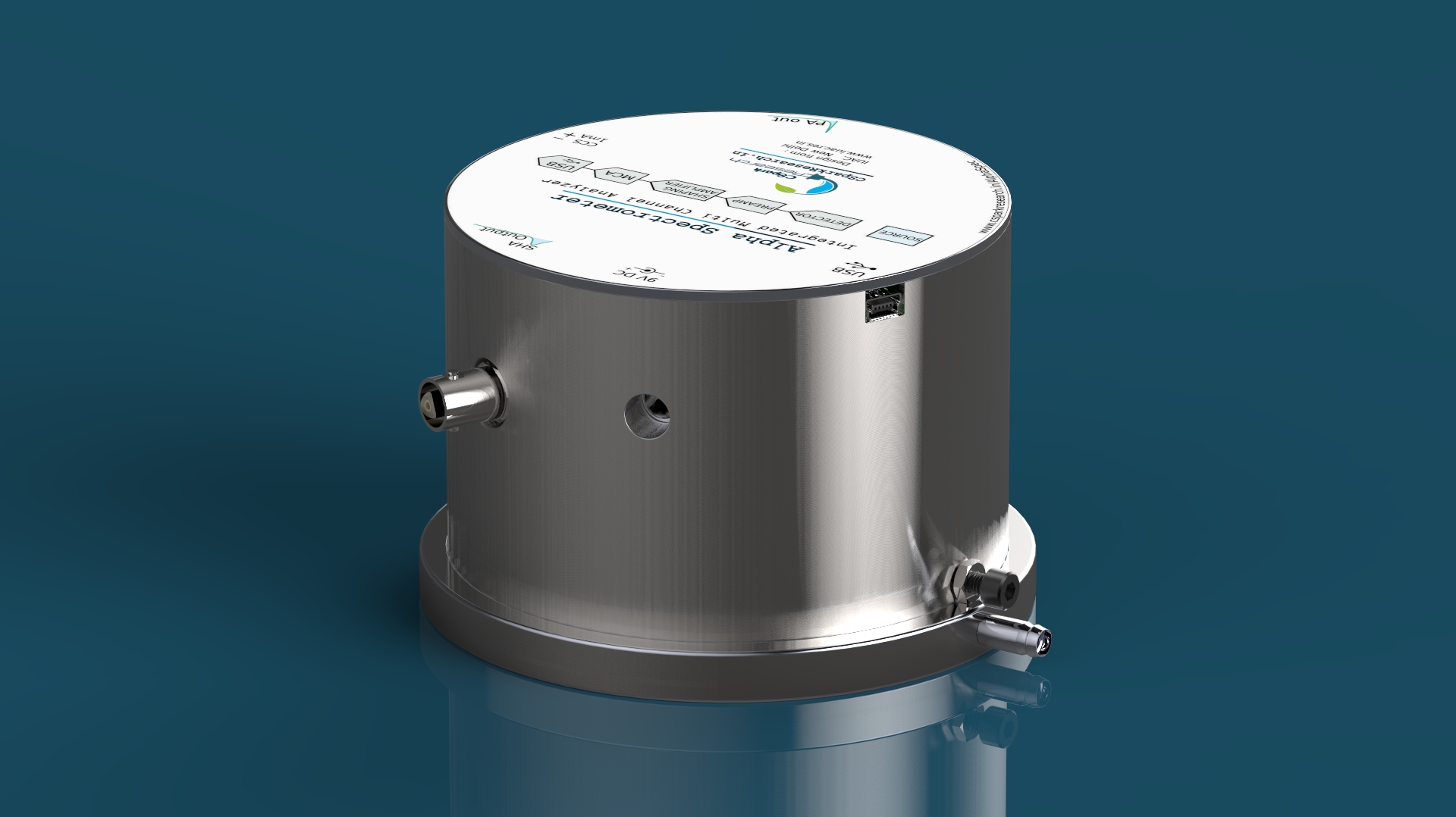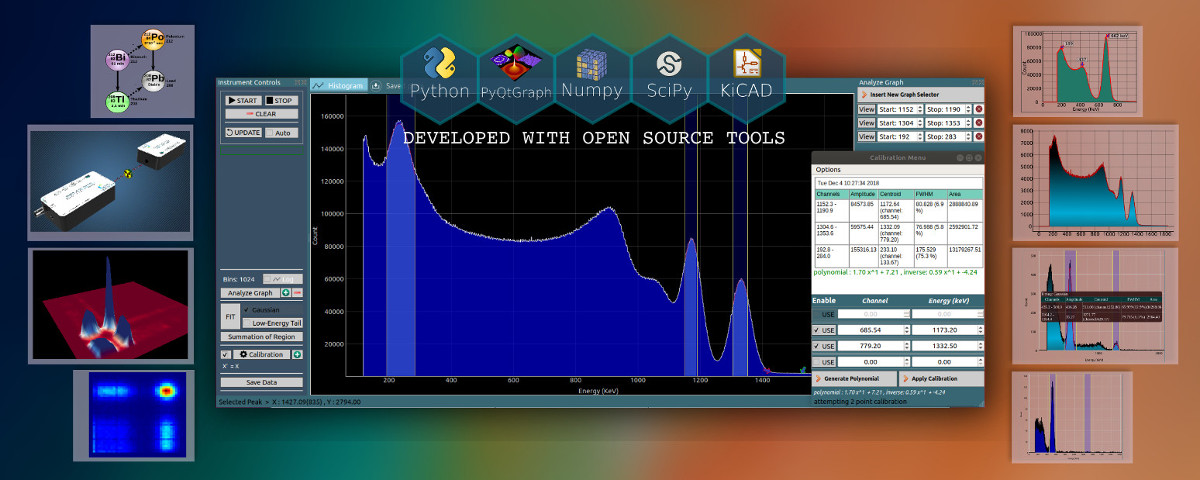

10 MeV full scale range
1024 bin MCA integrated. Fully USB powered unit
16 million counts per channel.
Monitoring outputs for preamplifier and shaping amplifier.
Fully featured Python software supplied open-source.
1/2 litre vacuum chamber with 6mm inlet port.

| Title | Journal | Author(s) |
|---|---|---|
|
Measurement Model of an Alpha Spectrometer for Advanced Undergraduate Laboratories |
Physics Education-IAPT Volume 35: No 1. Jan-Mar 2019 | Jithin B.P. , V.V.V. Satyanarayana, |
|
Alpha Spectrum of 212-Bi Source Prepared using Electrolysis of Non-Enriched ThNO3 Salt |
Physics Education-IAPT Volume 35: No. 1. Jan-Mar 2019 | Swapna Gora, B.P. Jithin, |

Once a spectrum from a known source has been acquired, the region selectors of the software can be used to mark the peaks, and measure their centroids via gaussian fitting. The fitting routine can be optionally instructed to consider a low energy tail for asymmetric peaks. The calibration window is used to supply known energy values for the analyzed peaks from which a polynomial is generated, and this completes the calibration process.

Thorium Nitrate can be used to deposit a thin film of Bismuth-212 on lead foils via electrolysis. The short half life of Bi-212 (60.5 minutes) enables students to view the typical exponential decay curve within one lab session by studying the activity of the film deposited on the Anode. 212-Bismuth’s decay chain involves two distinct alpha particle energies, with the highest known branching ratio of 66:34, and this can also be verified to better than 1% accuracy with our spectrometer.

At atmospheric pressure, Alpha particles are rapidly attenuated. Students place the source at varying distances from the detector, and record the centroid channel to study this. Similarly, the effect of air pressure is studied by setting different levels of vacuum for a constant source-detector distance.


For a fixed source-detector distance of around 2 cms, the centroid channel is recorded for different air pressures. In order to achieve different pressures, the pump is first used to evacuate the chamber for a while, and is then cut off by closing the series valve. Following this, the vent valve is slowly opened till the pressure rises to the desired level, and closed before acquiring a dataset.
Th229 , A multi-peak source , was analyzed using the AlphaSpec1k. It can also be used to verify the linearity of the instrument since a wide range of energies are available.


Open-source software, CNSpec, is supplied with the instrument.
Touch and drag to rotate the model (Double Click for fullscreen)